What Other Animal Are Related To The Llama


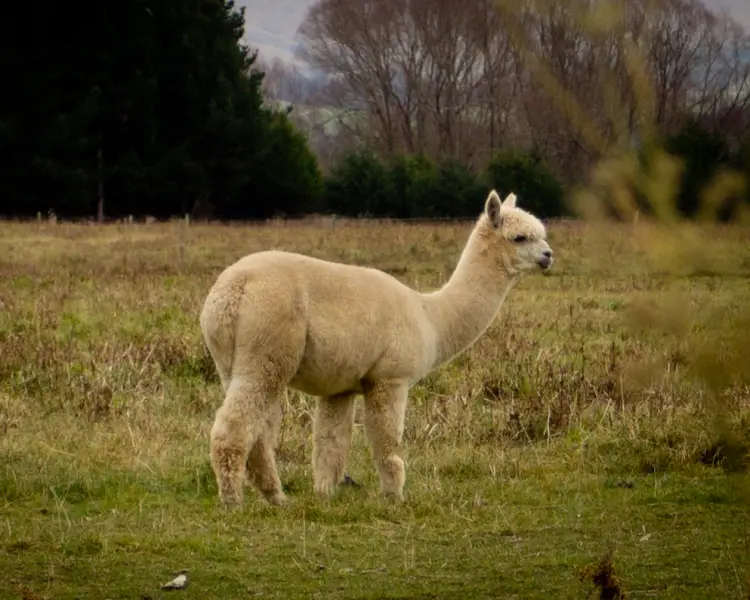
Llama
Llamas are domesticated animals from S America. They are of the aforementioned family as camels merely don't have a hump. They accept rather long ears which are curved slightly inward, known as banana-shaped. Their anxiety are narrow, their toes being more separate than those of camels, each with a distinct plantar pad. Llamas take a very short tail and their coat is long, soft, and woolly. They are usually brown in color, ranging from very dark to very light, depending on where they alive.
Photos with Llama
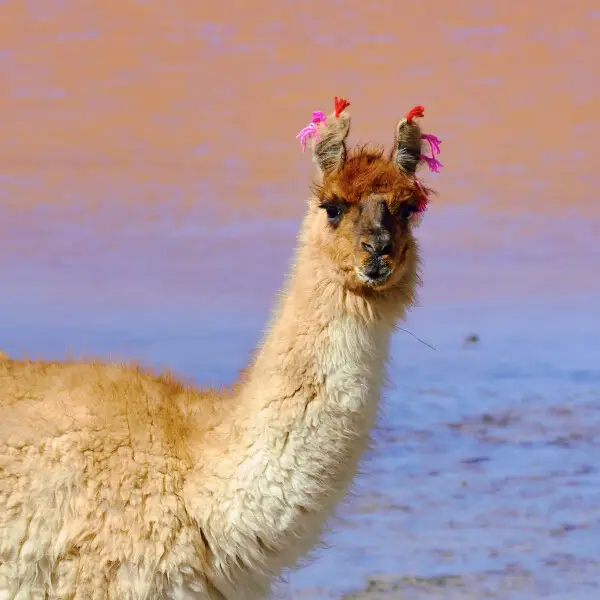
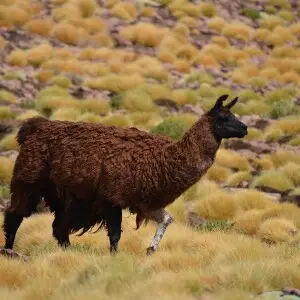
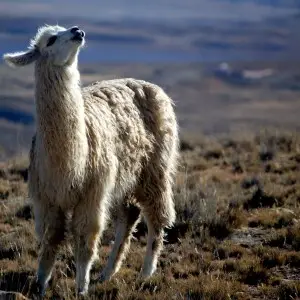

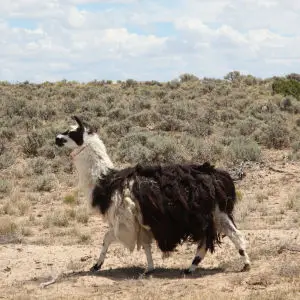
View 26 more than photos of Llama
Distribution
Geography
Originally llamas are native to the Andean mountains of South America, just now they are extinct in the wild and exist today only every bit domesticated animals. They were introduced equally pets and farm animals to North America, Europe, and Australia. Their natural habitat is the Andean highlands, particularly the Altiplano of western Bolivia and southeast Peru, plateaus that are covered with low vegetation, including various stunted copse, shrubs, and grasses. In the region of the Altiplano, the northern parts are mountainous and reasonably temperate, while the south is inhospitable, being drier and desert-like.

Biome
Climate zones
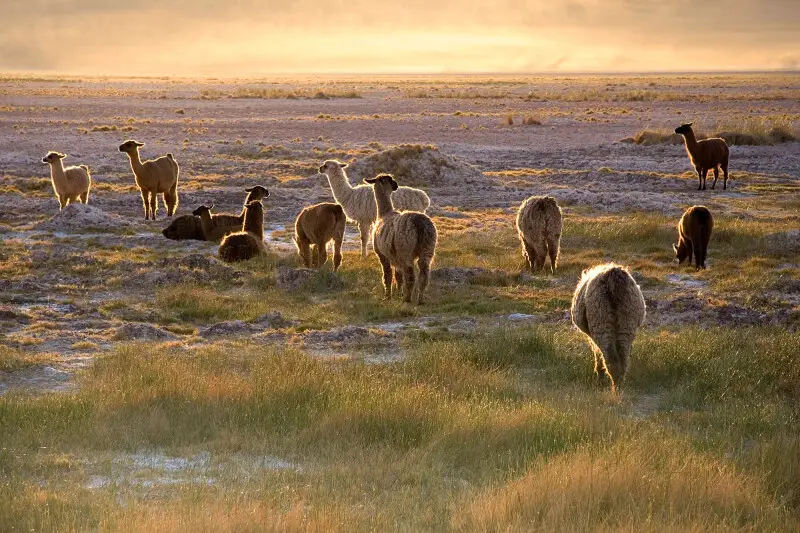
Habits and Lifestyle
Llamas are highly social, gregarious diurnal animals, living in groups of as many as xx individuals. The groups consist of around half-dozen convenance females with their young from the current twelvemonth. The grouping is led by a single male that defends his position aggressively past taking part in say-so fighting. These animals use communally shared latrines for feces, possibly to mark territory. Llamas make a lot of vocal sounds, using a range of calls that are low and yammering. Their vocalizations are especially distinct when there are predators almost and to warn other llamas of danger. They are aggressive in the presence of predators and volition accuse, kick, bite, and spit at those they consider a threat.
Diet and Nutrition
LLamas are herbivorous (folivorous) animals. They browse for mountain vegetation, lichens, and low shrubs.
Mating Habits
Llamas are polygynous. Males gather a harem of around 6 females into their territorial expanse and then drive away aggressively all other males of convenance age which come into the surface area. Llamas generally mate in late summertime and early autumn. Gestation lasts 350-360 days, and one cria (infant llama) is built-in to each female virtually every yr. A cria is able to run an hour or so after beingness built-in. Newborns weigh around ten kg, and for 5-6 months they are nursed. The mothers are responsible for most of the parental care, protecting and caring for their crias until they are about one year old. Males provide some indirect care in that they defend a territory that provides sufficient grazing for the young and the females of their group. The females become reproductively mature betwixt 18 and 24 months, males at 2 to 2.5 years old.

Population number
The current population in Due south America of llamas is estimated to be over 7 meg and there are approximately 158,000 llamas In Canada and the U.S.
Domestication
Domestication of the llama began most iii,000 to v,000 years agone, making them 1 of the first animals in the globe to be domesticated. Inca Indians used them every bit pack animals, and every bit a source of nutrient, clothing, and fuel.
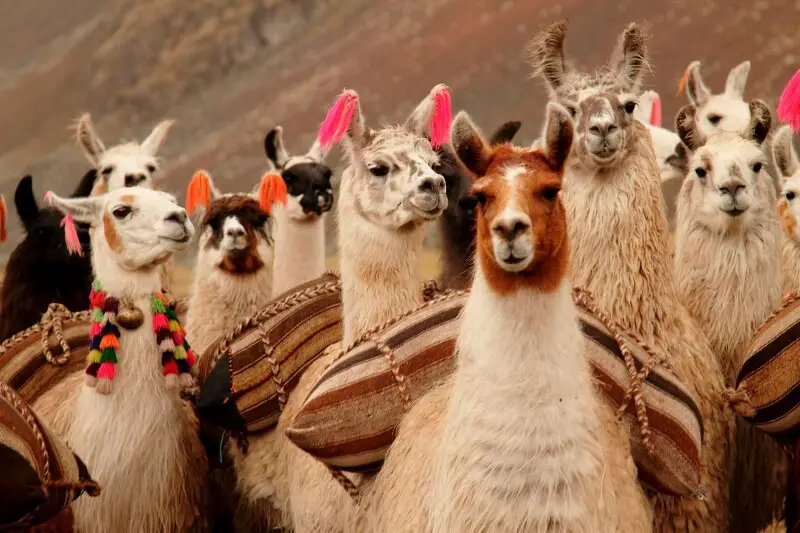
Fun Facts for Kids
- Llamas are popular in the U.S. for pets and companions. They accept a gentle temperament and inquisitive grapheme, which make them perfect equally a companion or therapy animals. They are used in hospices, nursing homes, and hospitals to give residents some interaction and provide a sensory feel, as a visit from a llama is an emotionally positive exercise for patients and residents. Such therapy tin help with healing or merely provide some entertainment and enjoyment.
- Llamas are known for the gentleness of their character and the ease with which they are trained. Often they tin acquire new tasks after only a few repetitions.
- A llama stretching up very alpine with its head held loftier, flicking its tail rapidly, usually means displeasure. Pregnant females normally utilize this behavior to deter an approaching male person.
- Fossil footprints in California show that llamas, which are relatives of camels, came originally from North America. Information technology is thought that the animals that went north and crossed over the Bering land bridge later evolved into camels, while those that migrated due south evolved into the "llama" family unit.
- Llamas brand a range of sounds, the most mutual i being a humming noise. Females hum to their crias (offspring). Males orgle during breeding, which is a sound similar a gurgle. If two males decide to fight, they will begin screaming at each other.
- Llamas do spit, usually to settle an argument about food or to make up one's mind which llama is dominant. A female person will spit at a male to brand him become away. They do not usually spit at humans unless provoked.
References
More Fascinating Animals to Learn About
Source: https://animalia.bio/llama
Posted by: millerpithenclacke.blogspot.com

0 Response to "What Other Animal Are Related To The Llama"
Post a Comment